Haryana’s GEOA 2025: A Boost for Captive Solar Plants and Wind Energy Developers
Haryana’s GEOA 2025: A Boost for Captive Solar Plants and Wind Energy Developers
The Haryana Electricity Regulatory Commission (HERC) introduced new changes to Green Energy Open Access (GEOA) in February 2025. These updates are expected to streamline renewable energy adoption in the state, making it easier for industries and large consumers to tap into solar and wind power.
But what exactly do these regulations mean, and who benefits the most? Let’s break it down step by step.
What is Green Energy Open Access?
Green Energy Open Access is a policy framework that allows electricity consumers to directly buy renewable energy (like solar and wind) from the open electricity market, rather than being completely dependent on the DISCOMs.
In simple terms, the businesses and industries can source clean energy at competitive prices. This lowers the electricity bills and helps them achieve sustainability targets by reducing dependencies on fossil fuels.
GEOA has introduced special facilities for industries that have distributed electricity facilities across multiple factories. This ensures flexibility for consumers to choose where to buy power from. It simultaneously creates demand for renewable developers by encouraging more green projects.
What Was the Previous Regulation?
The Green Energy Open Access regulations, which were implemented in 2023, had some restrictions. Highlighted key points are:
- Charges involved: Wheeling charges, cross-subsidy surcharges, and additional fees made renewable open access costlier for many users.
- Limited scope: Consumers could not always use renewable power flexibly across different units or facilities.
Many medium-sized businesses and captive power plant owners could not benefit fully due to high entry barriers and cost restrictions.
What Are the New Changes in the Implementation?
The 2025 regulation update by HERC has made key improvements that have boosted renewable adoption:
- Flexibility across facilities: Consumers with multiple units can now club their sanctioned load under the same electricity operation division of the distribution, if above 100 kW.
- Rationalized charges: Cross-subsidy and other charges have been simplified, making renewable power more cost-competitive.
These changes mean that even smaller industries, educational institutions, hospitals, and commercial buildings can now adopt green power without facing heavy restrictions.
Who Can Benefit?
The new regulations bring direct advantages to a wide set of consumers and stakeholders:
1. Industrial Consumers with Multiple Units
Industries with multiple factories and offices across different sites can now pool the entire load and opt for cheaper renewable energy.
2. Captive Power Plant Owners
Businesses with their own solar plants can easily transfer and sell power across other facilities and in the open market.
3. Solar & Wind Developers
The demand for renewable projects is now slowly growing, with additional help from the government, providing larger markets for the developers and offering open access.
4. Consumers on Shared Feeders
With shared electricity lines, now you can participate under the new framework and expand the reach for open access.
Conclusion
The 2025 HERC regulation changes mark a big step towards making renewable energy more accessible in Haryana. This not only supports India’s renewable energy targets but also gives industries a clear pathway to cut costs and meet sustainability goals.
At Smart Roof Solar, we help businesses and institutions navigate such policies and make the switch to solar smoothly. If you’re considering going green and want expert guidance, connect with us today, and let’s make your energy transition smart, affordable, and future-ready.
FAQs
Q1. Can consumers switch between DISCOM supply and open access?
Ans: Yes, it is possible, but it is important to follow the HERC’s switching protocols and timelines.
Q2. Are rooftop solar systems eligible under GEOA?
Ans: Rooftop solar systems are eligible only if they fall under any group arrangement.
Q3. Is there a cap on how much renewable energy a consumer can buy?
Ans: There is no fixed cap, but the arrangement must align with sanctioned load and grid availability.
Q4. How long does it take to get GEOA approval?
Ans: The actual timelines may vary, but HERC aims for approvals within 15–30 days.
Q5. Are banking facilities allowed under GEOA in Haryana?
Ans: Banking provisions are limited; consumers must align generation and consumption closely.
Suggested Articles
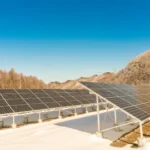
Latest 100 kW Solar Plant Price in Delhi | Subsidy, ROI & Payback
Thinking about installing a 100 kW solar system in Delhi? This 2025 guide breaks down the 100 kW Solar Plant Cost in Delhi, explaining price per watt, total investment, energy generation, and key benefits for industries and businesses.
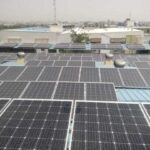
How Installers Cut Costs on Solar PV Module Mounting Structures
Solar PV mounting structures can significantly impact project cost. Explore how expert installers optimize design, materials, and labor to achieve safe, durable, and cost-effective solar installations
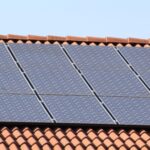
Solar Panel Installation on Tiled Roofs: Complete Homeowner Guide
When you’re ready to install solar panels on your home, there are many factors that will determine the unique design and cost of your solar system. Various roof types require different processes for installation. For example, lightweight tile roofs can present unique challenges and considerations for a solar installer. Here are a few things you need to know before adding solar energy to your tile roof.
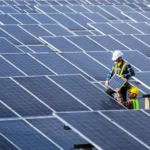
Developers fear unfair state-specific levies will make solar more expensive
Developers in India are concerned that state-specific levies on solar projects could increase costs, slow adoption, and impact the growth of renewable energy across residential, commercial, and industrial sectors.

India Solar Energy Policies: Key Updates and Government Initiatives
India is one of the leading countries in terms of solar energy development, having become the fastest-growing market for solar power globally.

Solar Energy for Industries Explained: Everything You Need to Know
Solar energy can greatly benefit industrial and factory owners as they require a constant and substantial source of electricity 24/7.
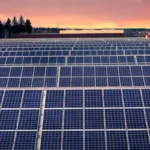
Delhi Government Pledges to Boost Renewable Energy Generation
Delhi, the capital city of India, is moving towards a greener future with an ambitious plan to generate an additional 6,000 MW of electricity using renewable energy sources.
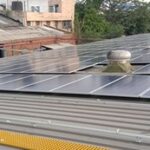
How Azimuth Angle Impacts Solar Panel Efficiency for Homes, Industries, and Commercial Buildings
Discover how solar panel azimuth impacts energy generation in homes, industries, and commercial buildings. Maximize efficiency with correct orientation.